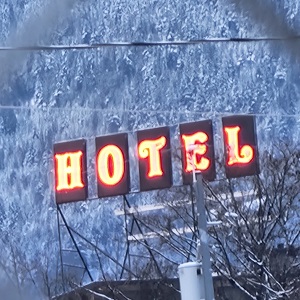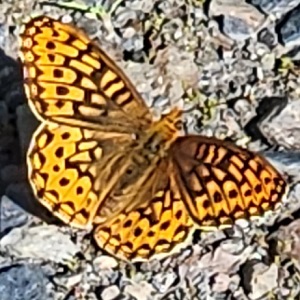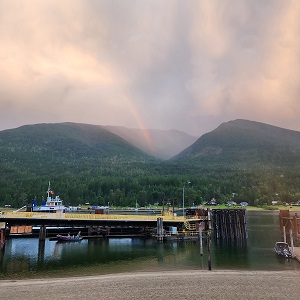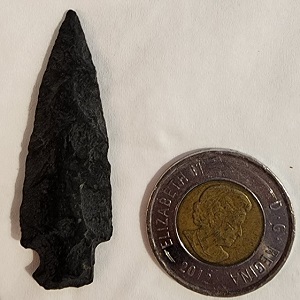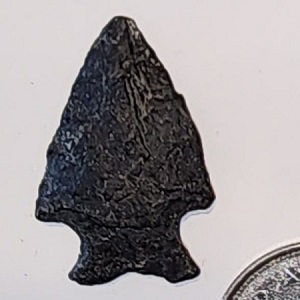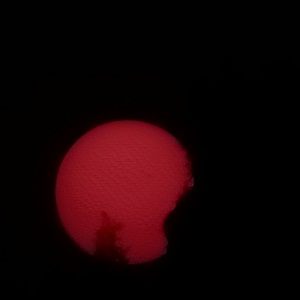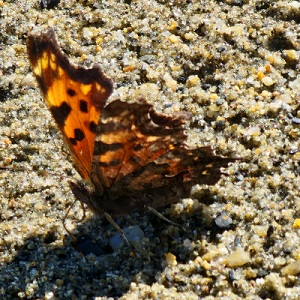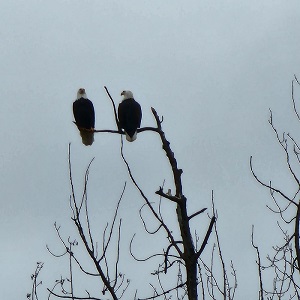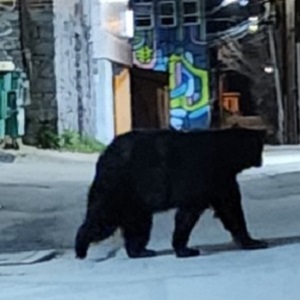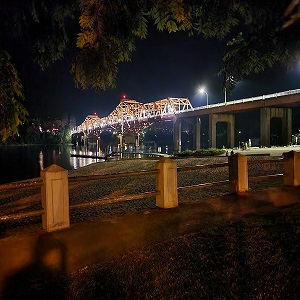- Details
- Written by: Rod Boyle
- Category: Books
- Hits: 735
Now, this was a fever dream of a book, filled with cascading correlations & inspirations. Scarce a page read that I didn't have to set it down and make some notes, which I'll endeavor here to share with you. Given the abundance you'll forgive the inevitable errors in grammar.
*****
Notes on chance:
This, perhaps - the biggest thing. They have no conception of chance - everything happens as the result of ghosts, unseen spiritual influences, witches and wizards. The world - in the "Primitive Mind" - is causal.
Notes on time:
Seldom concretely conceived, a future event can be imagined without the necessary procession of events leading up to it, the destination is what matters and the rest will be dealt with on the way. This is the language of "Myth" - "A long time ago .... in a galaxy far, far away" sort of thing.
Worthy and related are the conceptions of death - that "ghosts" concretely exist only as long as such and such a tribesperson is "remembered" - when they pass out of memory they become part of a more general "pool of spirits" - they move from the concrete to the abstract.
In this, if you consider it - time is a more personal space. Not bound by calendars or the abstractions of clocks and measuring the experience of it is of necessity more immediate.
Notes on Cognitive Bias
That they tend to remember only those events that confirm the belief, custom or "superstition" (superstition should be a considered to be a lighter, more watered down version of their lived spirituality), disregarding all the rest, the seeing omens and portents everywhere, omens - however they're divined (the natural incident of a bird entering a hut might be augured a bad omen, naturally occurring), while omens can be solicited as well through casting bones, boiling water, etc.
If the omens are unfavorable the task is put off. If they divine a favorable omen they are free to pursue their object, which might be a hunting or war party.
Now an omen is not regarded solely as a portent (of success or failure) but as the will of the Gods, thus a favorable omen (in their minds) makes whatever enterprise they've contrived as good a success as can be imagined, needing only the formality of the execution to complete it.
A favorable omen being divined from the slaying of cow, for instance, would result in the pieces of the cow being distributed and kept as talismans & amulets, believing the hide, hooves, etc. possessed of the same qualities of the omen.
Here we see that the circumstances of the object are what make it valuable, not the object itself, the green desert glass used by the Egyptians, the meteor strike most likely witnessed, or in western culture something as simple as a lock of hair stolen from a lover, woven carefully into a charm, are what create the value.
"To Think and then Speak it is to see the job done, it was only trivial action required to complete it". This recalls the Bible - with which God breathed the world into existence, the beginning and naming of creation.
Views on Sleep:
That sleep, universally, is seen as akin to death, during which time one visits with the dead and are regarded as a separate but valid reality akin to death. It may afford an opportunity for prophecy, or advice to the living.
Views on Witches, Wizards and witchcraft:
Adverse circumstance, health, and misfortune is readily attributed to witches and Wizards. Such accusations were not made lightly - both the accuser and accused would willingly submit to "Ordeals" as proof of their innocence or guilt. They would drink the poison, engage in competition, and there was no challenging the verdict. The survivor was either innocent of witchcraft, or had made a just accusation. Now - here begin the arguments as to their primitiveness - to their thinking, if you are innocent you will survive the potion. Compare this to the witch trials of the New World - Salem springs to mind - and the ordeals placed upon them - they were innocent only if they died - (drowned, etc). Clearly in this the "Primitives" were infinitely superior to our more modern forefathers and more favorably disposed towards women. And - note - that to make the accusation meant that you too would suffer the ordeal, and this alone would have been enough that people considered their allegations more seriously.
And - should the witch (primitive) die then many tribes afterwards would conduct a rude sort of autopsy, looking for anomalies within the kidneys, etc to verify that indeed it was a witch/wizard that died in the ordeal.
Now another note on Witches/Wizards - A witch was not only someone capable of civic malice through occult forces, but by and largely they were presumed to be a sort of physical or spiritual cannibal, hence the reviling of them.
Punishments and ordeals were - as opposed to Western Culture - for the FIRST CAUSE - the thought that led to the action. The thought is weighed not only as having caused the action, but being one with it - leads you back to "The Logos or Word", or the fact that to be a witch or lay a curse can be as simple as being accused of having ill thoughts towards someone, and as such conditions the people to think "accordingly". From an ideological point of view, and for the health of the tribe, this is excellent. Right thoughts seldom leads to wrong actions. The "deed" - if there was one - burning an effigy, a charm or potion, were of no account, merely examples or proof of the "ill will" the Witch/Wizard bore the victim.
"I'll will has the same effect as ill doing" - "They attribute quite extraordinary power to words and thoughts" - for thought is almost always the antecedent to action.
Now let us compare the "Primitive" to the Bible - Proverbs 4:23, NIV: "Above all else, guard your heart, for everything you do flows from it." Proverbs 4:23, ESV: "Keep your heart with all vigilance, for from it flow the springs of life." Proverbs 4:23, KJV: "Keep thy heart with all diligence; for out of it are the issues of life."
The native, tribesman, aboriginal, Eskimo - they understand this implicitly.
Arrowheads could be fashioned out of human bones, smeared with infection, but the venom is the accompanying superstition, even to be scratched ensures death from the spirits as that was the intent it was sent with. The rest was merely ritual. No matter how trivial the wound the reciprocal belief would effect it's purpose.
For this reason to covet what is not yours, or to envy another man, is to do injury to him. "They equate coveting the same as theft."
Frequently noted by various missionaries was the abuse of western doctors after treatment - only rarely were they grateful, because they felt the medicine, bandages, casts, etc. were merely rituals, they expected the cures to be instant, a lifting of whatever curse or spell was cast upon them. Often the patient would return after a successful cure to demand gifts, thinking themselves - with the ointments, bandages, pills, hospital stay - the inconvenienced one. One doctor was notable popular with patients, himself being a bit of a singer, which he attributed to his skill, another enquiring found out that it was his singing the Natives liked, the "ritual" aspect of being treated more in temper with their own Medicine Men.
One particularly humorous report from a physician - that had prepared pills for someone ill, his wife appears to pick them up. He gives her instructions - that the patient should take one in the morning, and one at night. She tells him it will be too much trouble, will be forgotten, and so the physician concedes they can be taken all at once. At which point she swallows them both.
The corollaries here to the Bible are too big to be ignored, read Luke 7:1-10 and Genesis 2:24. She implicitly understood the Bible, without having read it, better than the missionaries sent to convert them.
By the same thought, Proxies were often allowed for Ordeals - a son or father allowed to drink the poison on behalf of the other - because - again, of the same flesh.
Customs & Taboos:
Primitive tribes are inherently distrustful of outside of outside influences and cultures. Traditions that appear savage to westerners are derived from thought processes that seem almost entirely alien to our own. Some of the more shocking rules he lists are as follows:
- Some tribes would demand the first born of any marriage be put to death, as there was the possibility that the husband might not be the father.
- Other tribes regarded the birth of twins as a bad omen, and both would be put to death. This might be a tradition that began in times of scarcity, when only one could hope to be fed, and rather than choose the mother is forced to give up both. (This is speculative on my behalf).
- Still others might regard twins as an auspicious omen, and take cause to celebrate.
- Dozens of others too many to relate.
Their belief in the Inescapability of Fate
If you fall from a canoe or kayak they will consider you as dead, and will hasten to finish you off with should you attempt to get back into the canoe. Even should you survive you will be consider "marked" by fate and not allowed again near the tribe. Now obviously they were aware of the dangers of rescuing a drowning person, but this extends to all spheres.
If a hut was hit by lightening or set afire it would allowed to burn down, the wailing of the people inside ignored by the tribe. To intervene was to risk bringing the wrath of the gods upon yourself and family.
Consider that if a tribesman was taken as a slave then later escaped many tribes would regard them as an outcast, and even if allowed to enter would never reach their former state. Which largely explains the fatalistic view of many slaves once caught (they believed often they were being fattened to be eaten by the white man, when in fact they were being fattened in the hopes they would survive what was sure to be a long and perilous sea voyage). This correlates with readings I've done on Slaves in the Middle East & Morocco in the 1920's, where slaves made no effort to escape and when freed would often lie outside of the camp or town and await death. "Freeing" them in this sense meaning the owner had no desire to continue to maintain the slave, for reasons of old age or health.
It naturally follows then that to save a life puts the rescuer under obligation to the person saved - the rescuer cheated fate, and so owes the rescued a debt. The rescued is often unable to return home - the taboo of cheating death is too strong, and to what end has he been saved for? This "Primitive" thinking, after a fashion has been economically realized in China, where there have been numerous cases where following a car accident the driver chose to drive back over the wounded pedestrian or child, rather than incur a lifetimes debt maintaining the "victim".
The victims - of crime, murders, mothers who die in childbirth, and often tribespeople lost in battle, become taboo, their bodies interred separately from the group and they're accorded a "special" sphere in the afterworld. Locations where these events happen are avoided, the event having acquired an evil aura to it.
In Fiji, shipwrecked sailors were considered "hot meals" - even if you were on the way to visit the tribe - the first cause of capsizing or accident means that you are being punished and must be eaten. And so they finish - as a matter of dire obligation - what the gods have started.
Now read Shakespeare: "My stars shine darkly over me: the malignancy of my fate might perhaps distemper yours." or "When in disgrace with fortune and men's eyes I all alone beweep my outcast state."
- With one noted exception, attitudes regarding the sick and near death were the same. Up until a certain point they would consult medicine men and witch doctors - make offerings, with relatives going to such lengths as severing digits from fingers to appease the gods, or beg the intercession of the Gods. one Missionary noted that most islanders were one or two fingers short from this custom.
Now, consider this in context of Paleolithic Cave Art - LINK: https://www.livescience.com/64228-paleo-artists-cut-off-fingers.html and note that similar customs exist today - the Japanese Yakuza and portrayed in quite a few movies, notable the third John Wick.
Which would go on to a point, at which point food would be provided to the sick & dying, but no assistance provided to eat it, and if they thought death was near the person would be taken to the edge of town. Their apparent indifference to suffering - at this stage - is again for reasons that if considered make sense. They are possessed of a reasonable fear of contagion - not understanding germs or health in the way we do they recognized a spiritual contagion, it is also recognized as their "fate", if prey to a witch or wizard they are not able to overcome, and consider they need bury the body before sundown, and will abet the death to ensure this happens. This - as well makes sense in that leaving a body unburied out of town simply encourages predators to come and invite further misfortune.
Death was recognized often before the afflicted stopped breathing or heart stopped beating. We recognize the same in event of brain injury, but consider as well examples we're all familiar with, including dementia and Alzheimer's.
The exception to this rule was the Samoans, who would nurse and gather friends and relatives to see the dying for one last time.
Possessions were frequently buried with them or disposed of, being considered a real spiritual part of the deceased. Examples of this are too numerous to question.
Taboos:
First contact was almost always regarded with hostility. Many tribes thought that the traders or explorers were come from the land of the dead (to explain their pallor), and all cultures had prohibitions regarding contact from tribes beyond their sphere of knowledge. Taboos surrounded foreigners, they were regarded as harbingers of evil spirits and death. And - in every case without single exception these taboos proved uncannily prophetic - Plague followed plague in the steps of the early explorers and missionaries, and contact was invariable followed with diseases that the natives had no immunity to. Smallpox, dysentery, fevers and flus - many of these diseases had mortalities in excess of 30 or 40%, and no sooner than the tribe would recover than another new face would come bringing another fresh set of diseases. Some island dwellers went so far as to to "quarantine" anything visitors or traders left behind. With no understanding of disease, these were understood to bear the malicious spirits and intentions of the people who bore them. One chief in Fiji went so far as to accuse the Missionaries attempting their conversion of having brought a "Wood Box" from which they leashed all the plagues and fevers upon the populace. Pandora, anyone?
First contact with island cultures that saw them coming naturally led them to believe they came from the sea, understandable given they first saw the masts over the horizon, then the ship that would rise up after (as if from the sea), and they that the gifts they brought were made for them by the dead under the sea, and that the canned food they ate was tinned human flesh...
When they understood each other well enough to explain the tribes would understand that - while they lived at the center of a flat earth, the foreigners of necessity lived upon the edge, and must be very close to the sky and the moon. All primitive cultures understood themselves to be at the center of the world, and all others to be more remote, and all subscribed to some version of a flat earth.
Innately conservative, tribes were loathe to make suggested improvements, even when freely acknowledging the superiority of the proposed methods, and when first introduced to things like a flint, for example to spark a fire, or a compass or an iron knife or gun - while expressing amazement, often had no desire to possess one. These were taken for granted as the accoutrements of a superior wizard. Gunshots amazed natives, not only because they killed prey so effectively, but because as well when seeing a bullet ricochet it appeared the gun acted twice! Their understanding of the gun is that it was simply a prop or wand to direct the wizards intention, the ejection of the bullet was a secondary miracle.
Becoming familiar with the explorers then allowed them to gradually accept and trade such items.
Note that these "improvements", if we can call them such, had to be delivered to them from outside the tribe. While they allowed the acquaintance of Whites as superior wizards who would take their way by force (so presumably better to acquiesce) in their own tribe progressive people would often be put to death. The tribe functioned as a unit, and people marked extraordinary by any circumstance - whether it be sickness, old age, inventiveness or simply being a very skilled hunter, to in any be way singular, noteworthy, or individual runs the risk of being labeled a wizard or witch.
Any variations in custom or routine is to be blamed for bad luck, not, of course, allowing for bad luck the break from custom or routine must be scrupulously re-examined to find the taboo it broke.
Most taboos, however, seem to have had intelligent and easily understandable roots. The Totemic Tribes of the Pacific North West had taboos on marrying within the same totem - presumably to prevent inbreeding. Many taboos existed soly to prevent an adverse thought - if rain is needed for the crops stay inside and let it rain, if you go outside you might get wet/cold and inadvertently wish the rain away.
When Taboos are broken by individuals the punishments by the spirits/gods are visited upon the group - hence the harsh punishments for those who break them.
There is, however, something of a rude science to their method. Upon whittling a dozen arrowheads or spears they will be tested out, and those that hit the target are judged - "blessed", and kept, while those that miss the mark are discarded. If a hunter shoots at prey and misses the arrow is judged infected by contrary spirits, and left where it falls, if it hits it is twice valued. The same would apply to crops, the cultivation of which would naturally favor the best and biggest, which would be judged favored by their gods.
***
Random Notes
Certain tribes of North American Indians would allow themselves to be led by a blindfolded young girl who will lead them hither and thither until they come across a worthy adversary, in the event of victory she will be married off to the chief. The girl in this instance is used as the agent of fate - both hers and the War Party.
Mascot - an unusual item acquired along the quest (rock, bone, what have you) - if the quest proves successful the Mascot is presumed lucky and saved for future quests. Examples of this abound in Fairy Tales and Disney movies, think the sidekick, where the faithful mascot accompanies the hero on his/her quest to it's successful (idyllic) journey and presumably continues beyond the confines of the story into the idyllic future.
That books used by missionaries and explorers were regarded as a "mirror for speaking" and used in divination (think the Bible and the Almanac Cooke used to foretell the eclipse) - and the idea that they could transmit thoughts this way - via paper, letter - over distance, amazed, even from the dead (why don't they just dream instead?).
There were no monetary systems discovered, but barter -and the items bartered often had to be in some way spiritually "Equivalent" - eg - a spear tip for a bangle, fruit for tobacco, pigs for knives.
The Shell system is still debated - smaller tribes generally did not value the shells of other tribes, and their usage seems to have been to facilitate & reward social obligations within the tribe - eg: chief saving up shells to lend tribesmen when they went to purchase a bride, or pay people when he went to war. The value to the shells was a social, not an individual one.
******************
Now, this is the briefest summing up of the ideas I found within, and Levy-Bruhl substantiates his case for the observed differences in "Primitive" vs "Western" thought with hundreds of first person accounts of their behaviors.
There are very clearly differences, but there are far more commonalities than differences. The biggest that I could see - first of all, "Primitives" allowed for no chance, everything in their world happened for a reason.
So could be argued for ours, but - we allow for the existence of chance. Lotteries, gambling, bad genetics, we argue there are things outside of our control, and make no effort to control them.
Yet, deep down we still believe that "Things happen for a reason", that "Victims somehow are responsible for what happened to them" and in luck, we are only unlucky when we lose, when we win we "were chosen" or "skillful".
We are substantially more innovative, adapting readily to invention, improvement and change. But we're a long way from perfect, and before identifying anyone as primitive we need to consider well how we can live more in tune and harmony with our surroundings. Primitive man "lived" spirituality, as opposed to relegating it to churches, or particular occasions. He/She was never above his surroundings, but a part of them. This, in my eyes, is a much more wholesome view of the whole topic. Reconciling "spiritual" and "scientific" though proves difficult for a great many people, and the resulting hodge-podge of beliefs result in them being neither.
In regards to tribalism, prejudice, etc. we are very much the same and socially moving more and more in that direction.
***
These thoughts did not occur in the same order in the book, they've been slightly reorganized for cohesion and to better fit my understanding. But the connections, I feel, are valid.
- Details
- Written by: Rod Boyle
- Category: Books
- Hits: 807
"To them the things which are unseen cannot be distinguished from the things which are seen. The beings of the unseen world are no less directly present than those of the other; they are more active and more formidable. Consequently that world occupies their minds more entirely than this one, and it diverts their minds from reflecting, even to a slight extent, upon the data which we call objective."
Now this, merely an introduction and a chapter in, is proving an excellent read. To summarize, it's an attempt by the author to reconcile Western, or European "Civilized" thought with the differences observed in more "Primitive" cultures, such as the North American Indian, the Australian Bushmen, The various tribes of Africa and the Congo, and with too many other examples to name.
The book - 100 years old, and last republished in the 1960's, wouldn't fly today, and even in his lifetime the author suffered substantial backlash as to his Eurocentric views, his concentration on the "Magical Thinking" aspect of them, and his labeling of them as "Primitive", which has acquired a lot of pejorative connotations since this was first written.
This is - to be expected, a somewhat inadvertent racism to the book, and even in the topic, which does not devalue it in any ways. If not writing of the differences from the European POV - then who others? Perhaps, if the Chinese were more colonial, we might have some intriguing references comparing the thought patterns to theirs, but we don't. And the implicit racism derives from the fact that we have no recent references to "Primitive Tribes of White People", which is unfortunate but needs be worked with.
On that note, the fact that civilization in any number of respects has declined greatly in the past 100 years will soon provide countless "tribes" - soccer stadiums, mega-churches, filled with people well on their way towards similar plateau's of thought and enlightenment.
The most noteworthy things I've noticed so far into it:
- The Spiritual Problem, which did not exist to the Primitive Man, who existed in a one-ness with nature and with a pantheon or plethora of Gods and Spirits, in relation to man but always above it.
- The Universality of these beliefs - where, in absence of "organized" religion or spirituality most "Primitive" peoples default to this standard of thinking. This despite them being separated by continents, oceans, and thousands of miles.
- Causality: that nothing happens by accident, that everything is the action of good or malign spirits, wizards and witches, that if a crocodile or lion should come and eat someone it is invariably the result of an evil agent, for why did eat that person and not another person, and everyone knows that crocodiles and lions are harmless(!!!), and so it goes until a human agency is found and reprimanded or found accountable. (Note that many of us - myself included - do this still today, we accord too little room for chance in our lives.). This of course leads to a curious thing in that nobody, for example, dies of accident, natural causes or old age, always it is the result of an enchantment, witch or wizard, and so there is no reasonable precautions are taken against what might be regarded as entirely predictable and dire outcomes.
Now - all this and only one chapter in. All of which are substantiated by innumerable examples told from hundreds of sources 'round the world. Unfortunately, the sources again are all largely European.
More: Wikipedia on Lucien Lévy-Bruhl : https://en.wikipedia.org/wiki/Lucien_L%C3%A9vy-Bruhl
His influence on Carl Jung: https://carljungdepthpsychologysite.blog/2021/04/08/carl-jung-lucien-levy-bruhl-and-participation-mystique/#.Y9atDXaIbIV
And his place in the "Bicameral Mind" theory: https://www.julianjaynes.org/jjsforum/viewtopic.php?t=15
Worth noting that the quality and intelligence behind the book is amply displayed in the many intelligent discussions surrounding it.
- Details
- Written by: Rod Boyle
- Category: Books
- Hits: 630
Now, I have read it through in the first order, Chapters 1 through 56, and found that there was still a third of the book yet to be read.
It's not a slender book, at some 600 pages, and it's not an easy read, for the most part. This is a good thing, the language and references are dense and there's a great many things I should be looking up. Words like Maldorors, Pataphysics, Melmoths, Octave Mirbeau's "The Torture Garden", there are innumerable, overwhelming cultural references of which I recognize only a few. When last I read books set in Paris, Hemmingway, Maughm and others, there was no internet, you knew the reference or you didn't and if you were lucky you got a footnote that explained it.
Now, now I have the internet, and I'm - not forever, but often enough, setting it down to go down some rabbit-hole suggested by the author. Not all pan out, but enough, enough.
A Sampling, googling the protagonist's encounter with Berthe Trepat - who turns out to be a fictional pianist, looking up on YouTube to find that in fact there's been music composed in her honor - in this twist of modernity, had a footnote been around some 30 years ago when last I did this sort of reading she would merely have been a fictional character, now, in the age of the internet, fiction becomes reality...
Her description, on page 106: "There was something moving about that face of a burlap-stuffed doll, of a plush turtle, of an immense nitwit stuck in a rancid world of chipped teapots..."
Now, I have finished it in the first order, now to read it again in the order prescribed by the author which will fill in for all the missing chapters and pages.
In the beginning, a little annoyed, "too soon", but the prose has a lyrical quality, a poetry, intensity, that reading it again I'm finding new ways to understand it.
An excellent book.
- Details
- Written by: Rod Boyle
- Category: Books
- Hits: 579
A slim book but never so engrossing I need to read it all at once. Ambrose Bierce, a curious American writer more noted for "The Devil's Dictionary" and vanishing in Mexico.
Here's one of the fables:
The Deceased and his Heirs
A MAN died leaving a large estate and many sorrowful relations who claimed it. After some years, when all but one had had judgment given against them, that one was awarded the estate, which he asked his Attorney to have appraised.
"There is nothing to appraise," said the Attorney, pocketing his last fee.
"Then," said the Successful Claimant, "what good has all this litigation done me?"
"You have been a good client to me," the Attorney replied, gathering up his books and papers, "but I must say you betray a surprising ignorance of the purpose of litigation."
- Details
- Written by: Rod Boyle
- Category: Books
- Hits: 660
I've not read it, merely dipped into it a few times when I saw Nanu carrying it about.
At 2000 pages it's a formidable book. Over half again the Holy Bible, and we all know how popular that is.
And, from the few pages I've read - well, about as readable as the Bible as well.
Anyways, I'm going to post a link to the wiki and the book online - because, after all, what says our tastes have to be the same?
Wiki on Urantia: https://en.wikipedia.org/wiki/The_Urantia_Book
Website with Book Online: https://www.urantia.org/urantia-book/read-urantia-book-online
Take 10 minutes and read the table of contents.
It's basically it's own religion, which makes me a little curious, but this life is too short to go down that rabbit-hole.

